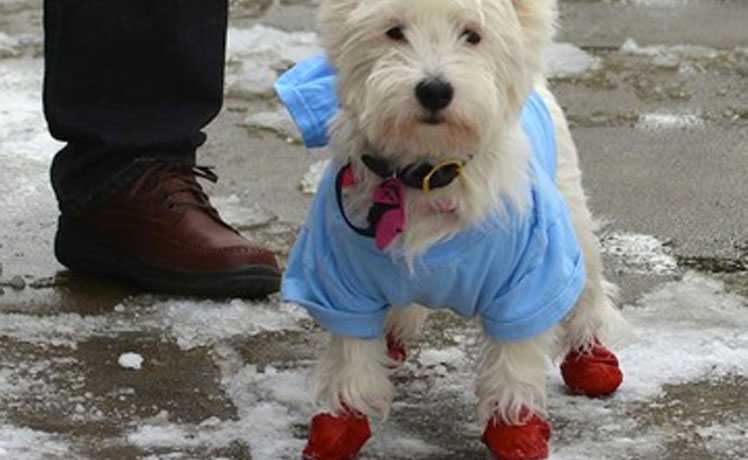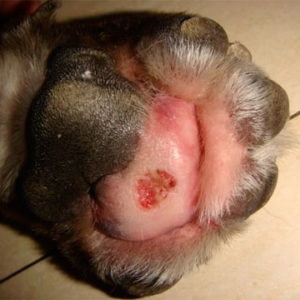
How to Protect Your Pet in Winter
We’ve had a number of patients lately come in with damaged paws and other injuries thanks to frigid temps and snow. Below are some tips on how you can protect your pet in winter, and remember the rule-of-thumb: If it feels too cold for you, it’s too cold for your pet.
 Protect Their Paws
Protect Their Paws
- Salt crystals and chemical ice melts can cause stomach upset if ingested as well as burns to your pet’s paws. In addition, snow, sleet, icy rain and cold can cause your pet’s paws to crack and bleed. We suggest that you massage petroleum jelly into paw pads before outside walks and consider using canine booties for protection.
- Also, be sure to towel off your pet after they’ve been out in the snow or rain, paying particular attention to their feet and under-carriage. It will help them dry more quickly and help prevent them from licking and ingesting harmful substances.
Groom for Cold Weather
- DO keep your pet’s paws and nails trimmed so that they are less likely to pick up salt, sand and harmful materials/chemicals when outside.
- DON’T cut your pet’s hair too short or bathe them too often in the winter. A longer coat gives them more warmth and protection. Frequent bathing can dry and crack their skin and paws.
- If you have a shorthaired dog, consider purchasing a coat or sweater for them to wear when outside. You’ll want one that provides coverage from neck to tail.
Indoors & Out of Cars
- Never leave your pet alone in the car when the mercury plummets. While your car acts as an oven in summer, it becomes a refrigerator in winter. Your pet could freeze to death.
- Keep your pets indoors as much as possible when temps are extremely low and don’t leave them out too long in your yard.
- Pets do need fresh air and exercise, however, so consider taking shorter, more frequent walks.
Puppies & Seniors
- Puppies can be particularly sensitive to the cold because they don’t have as much body fat as older dogs. Doggie sweaters, coats and canine booties are encouraged and you may wish to paper train your pet during the winter months.
- Senior pets, too, can be sensitive to the cold so again, consider protective garments for your older dog and take them outdoors on a limited basis until temps rise.
Extra Water
- Give your pet plenty of water during the winter to prevent dehydration and to encourage coat health.
Pet-Friendly Ice Melts
- There are a number of pet-safe ice melts on the market that you can use to de-ice your walkways and driveways without putting your pet at risk. Just check out the list on Amazon® and you’ll get an idea of the many options. And eco-friendly ice melts aren’t just safer for pets, they’re safer for people and plants, too. Please encourage your family, friends and neighbors to use eco-safe/pet-safe de-icers and ice melts. It’s a win for all of us.
